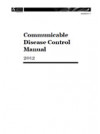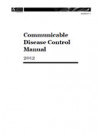The Communicable Disease Control Manual seeks to inform and assist those at the frontline of public health action, namely the medical officers of health, health protection officers and staff at public health units. The primary purpose of the manual is to describe the standard practice that public health services would normally follow in regard to the prevention and control of notifiable diseases (specific communicable diseases that are required to be notified by medical practitioners and laboratories under the Health Act 1956 and Tuberculosis Act 1948).
Most of the information is contained within disease-specific chapters. This includes case definitions and laboratory tests required for case confirmation. Some important general considerations are outlined below, and in the appendices.
Actions, policies and legislation for preventing and controlling communicable diseases develop and change with time. This manual has to keep pace with such changes, and for this reason it is now being published electronically and as a series of individual chapters, one for each disease. This will allow for individual disease chapters to be reviewed and updated separately in accordance with new evidence and best practice. This edition of the manual follows the format of earlier editions with some considered adjustments to content in addition to long-awaited updates. It includes references and electronic links to other guidelines and material for those requiring more detail.
The manual should be used in conjunction with other best practice guidelines, including the Immunisation Handbook. Users are also encouraged to supplement the content of this manual with existing evidence-based effective practices at their local level and to bring such practices forward for broader consideration and possible incorporation into standard procedures at a national level. Similarly, while the protocols set out in the manual reflect normal expectations, there will be circumstances from time to time that may require adaptation based on the professional judgement of the local medical officer of health (for example, in a significant outbreak or epidemic).


